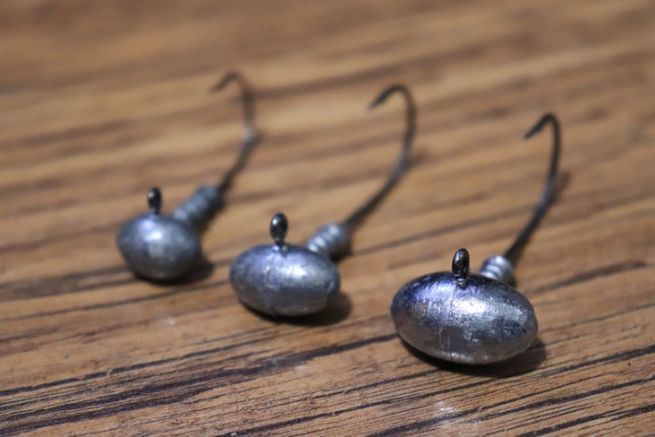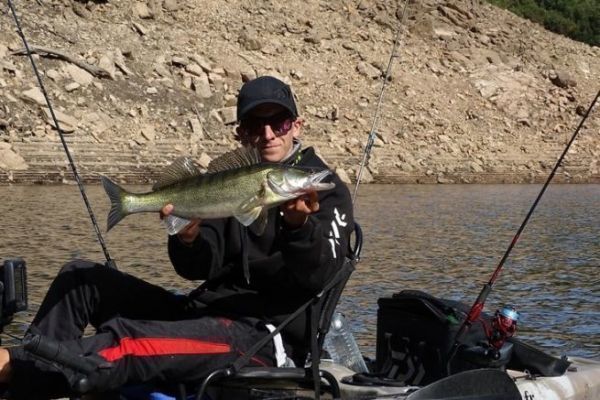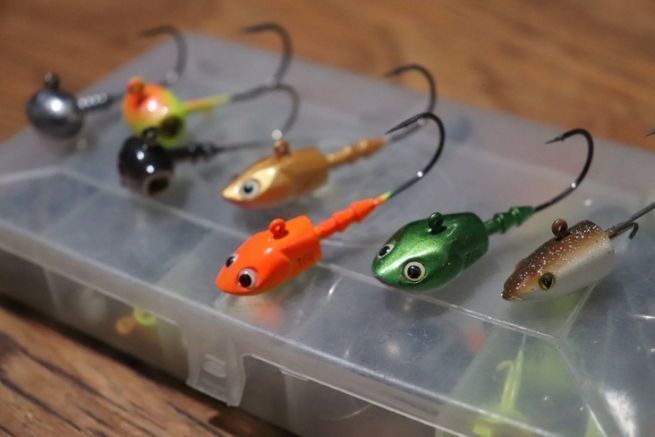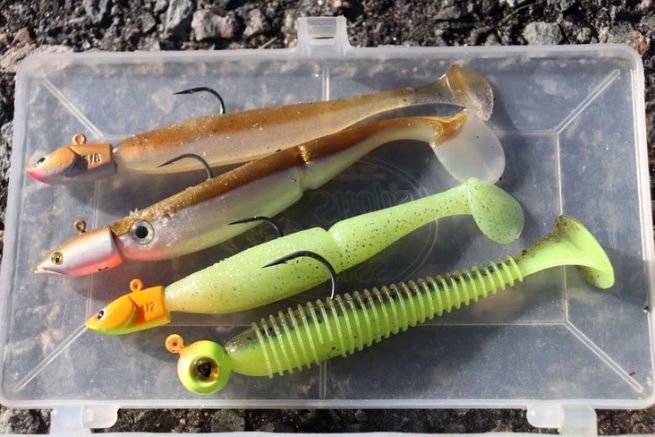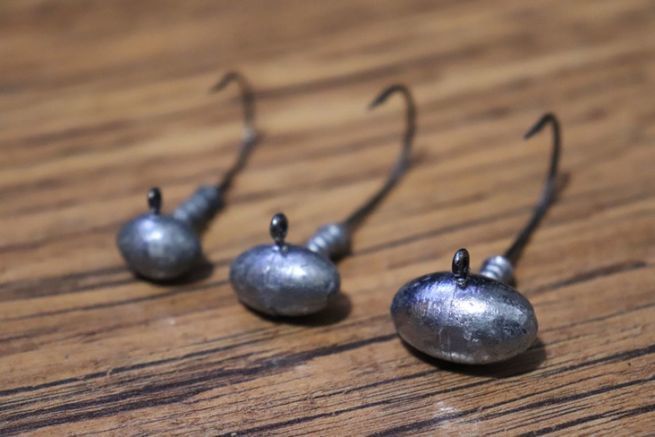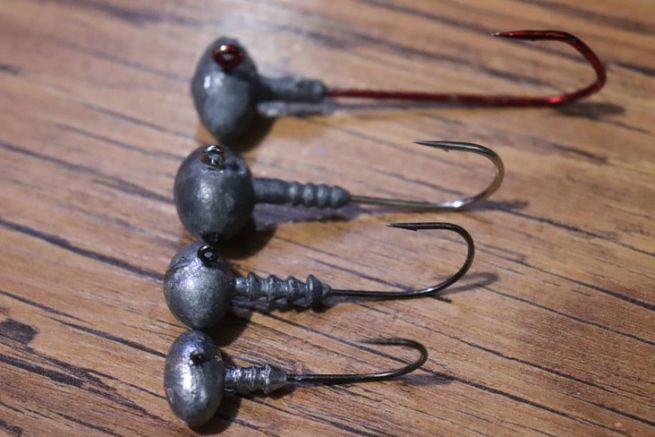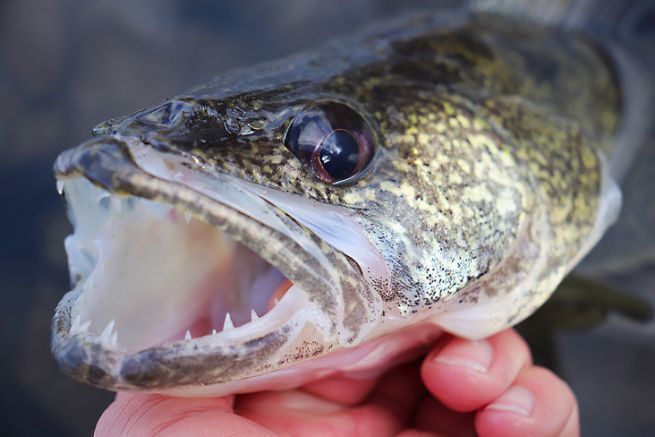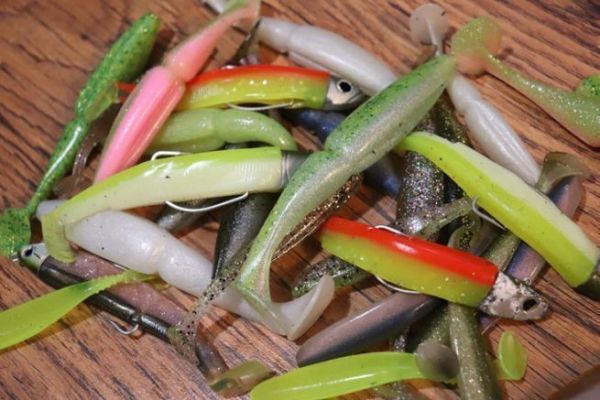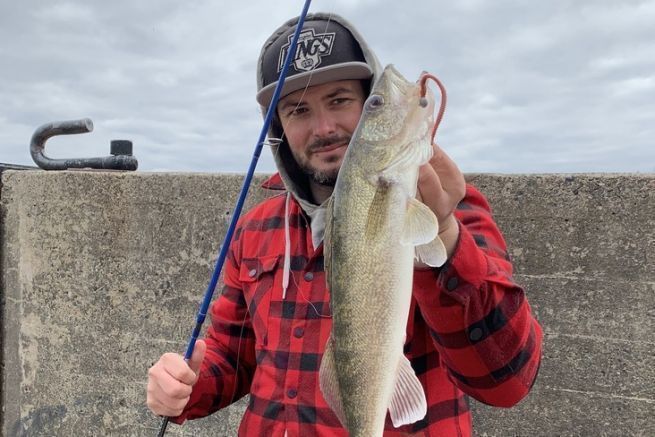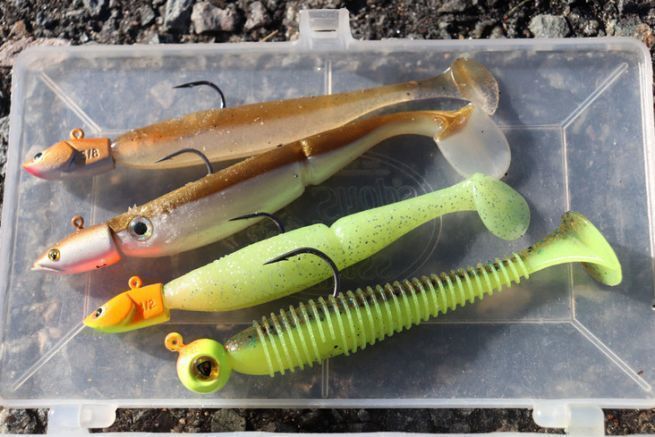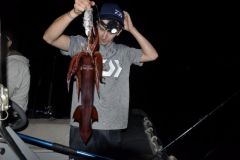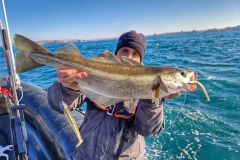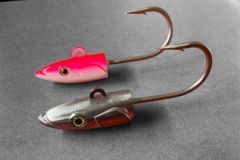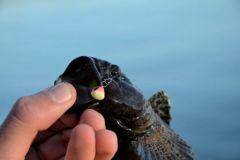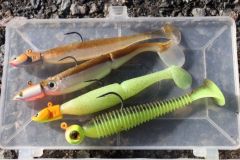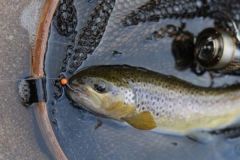Feed speed
One of the first factors to determine the weight to use is the feed speed. The higher this speed, the closer the lure will get to the surface, so to keep the lure close to the bottom, you'll need to increase the weight of the sinker. To counter this phenomenon, you can release more line and let the lure move further behind the boat. The most important thing is to stay close to the bottom thanks to the sensitivity of the rod, and to keep the right direction with the help of the echo sounder. So don't systematically try to see your lure, and allow it to be out of the sounder's field of vision, to keep your sinker consistent.
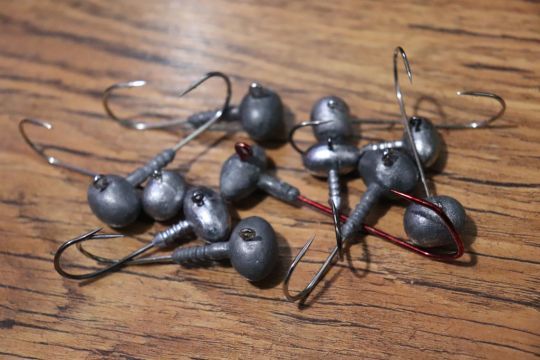
The depth
The greater the depth, the greater the weight of the sinker, on the one hand to reach the desired depth more quickly, and on the other to maintain contact with the bottom more easily.
Lure size
You can't cast a 3" lure in the same way as a 6" lure, and there's no ideal pre-established weight when it comes to choosing a sinker head, even if manufacturers do help us in this respect by offering products that often meet our needs. To help you, for everyday use between 3 and 5 meters deep, here are the weights generally used according to lure size:
- 3 inches = 4 to 10 grams
- 4 inches = 10 to 17 grams
- 5 inches = 14 to 21 grams
- 6 inches = 17 to 28 grams
Animation
If you're drifting fast, increasing the sinker has no real effect, as it allows you to easily ascertain the depth at which the lure is moving, and to easily vary its speed of advance. On the other hand, if you want to animate the lure and obtain a gliding descent phase, having the lightest possible sinker is important.
I won't go into the shape of the sinker and the shape of the lure. These are criteria to be taken into account when choosing the weight of the lead head, but they will be minor compared to the 4 criteria above. Finding the ideal sinker is not so easy, and requires a little practice and practice, but it's an important aspect that shouldn't be overlooked.

 /
/ 